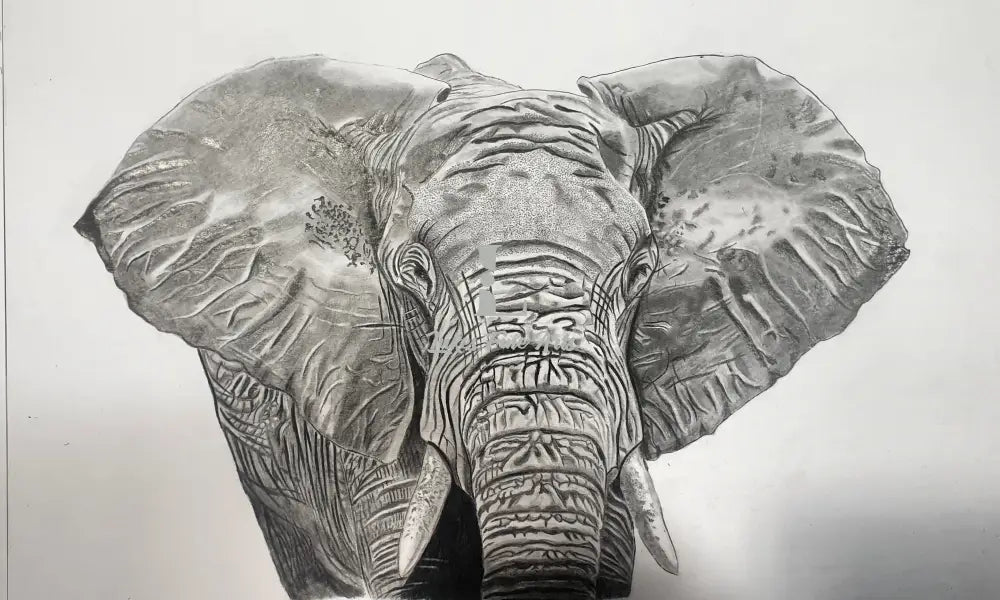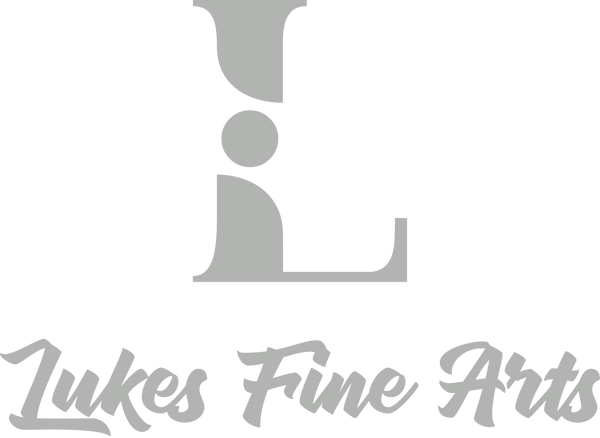
When to walk away – the secret to finishing without overworking
Share
Introduction:
Hi, my name is Luke Lewis, and I run a business called Lukesfinearts. I teach kids, teenagers and adults the secrets to unlocking realism and all the mental hurdles that come with that practice. In my classes, one of the most common challenges students faces is knowing when to stop. Some hold back and don't take their work far enough, while others fall into the trap of endless tweaking—constantly adjusting, fixing, and layering until the piece begins to lose its life, the latter is what we will be tackling in this blog today. Overworking your art is especially common with perfectionists or those new to realism. They want it to be “just right,” but that mindset often leads to overworking and frustration. Learning when to walk away is one of the most valuable artistic skills you can develop—and it’s something we’ll dive into deeply here. So as always, I am super excited to share this knowledge with you, I hope that you see some value in it and it helps you develop your journey in what you perceive to be the right direction. So without further ado, let's dive straight in!
Do you know when to stop?
Do you ever find yourself endlessly adjusting your work, even when you know you’re probably finished? Or maybe you stop too soon, unsure of what more to add. Both are common struggles—and this blog is here to help you find the sweet spot in between.
In this article, we’ll explore:
-
How to identify the moment when further work begins to subtract rather than add
-
Practical tools and mental tricks to help you step back with confidence
-
Techniques to help you spot overworked areas
-
Why perfectionism can sabotage your growth, and what to do instead
-
How to develop trust in your own instincts and finish strong
-
Helpful habits like taking breaks, photographing your work, and using a mirror to gain a new perspective
By the end, you’ll have a clearer understanding of how to finish with intention, avoid burnout, and let go of the pressure to make your art "perfect."
Understanding the signs of overworking your artwork
Art is a journey of discovery, and every stroke adds something meaningful to your final piece. But the pursuit of perfection can quickly derail that journey. Practising realism, in particular, can be a fantastic antidote to perfectionism—but only if you absorb its deeper lesson: your work will never be perfect. The goal is progress, not perfection. Each piece you complete becomes a stepping stone in your growth. When you internalise this mindset, you begin to draw with more confidence, more freedom—and your art naturally improves.
Overworking often happens when we forget this. We keep adding, changing, and refining long after the piece has served its purpose. Learning to spot the signs that you’re overdoing it will help you preserve the freshness and integrity of your work.
When is it too much? Recognising the signs:
-
Muddy shading: Over-blending can blur your values and destroy the crispness of your contrasts. If your drawing begins to look flat or unclear, it’s a warning sign.
-
Flattened highlights: Highlights are meant to be subtle and striking. If you go overboard, they lose their power and can even make the piece look dull.
-
Damaged surface: If the tooth of your paper is starting to wear down or the surface looks patchy and rough, it’s time to stop.
How taking breaks can refresh your artistic perspective
Sometimes the best thing you can do for your art is to walk away from it. Taking intentional breaks is a powerful creative tool. It helps clear your mind, reduce emotional attachment, and recharge your focus. When you return, you’re often able to spot mistakes or opportunities you couldn’t see before.
Breaks also interrupt the cycle of obsessive tweaking. They give you time to reset, reflect, and come back with fresh eyes—allowing your next steps to be more purposeful.
Clear your mind and improve your art
Don’t underestimate the value of pausing. Even a short break—taking a walk, making a cup of tea, or stepping outside—can bring perspective and clarity. Creativity thrives in a relaxed, open mind. A rested artist is a more inspired one.
The mirror trick for fixing art mistakes
One of the oldest and most effective tricks in the book: look at your artwork in a mirror. This instantly reverses your image and helps reveal proportion issues, imbalance, or awkward shapes you were too used to seeing the “right” way.
After a break, your mind is more objective, and using a mirror in that state can be a game-changer. It’s like seeing your work for the first time all over again.
Photograph your work to find errors
Looking at your work through a camera lens helps you create distance. What looked "fine" up close might stand out as a mistake in a photo. You can also gain valuable insights into composition, values, and overall impact.
Want to take this a step further? Use apps to place your reference image side by side with your artwork on your screen. This makes it easier to zoom in and focus on one section at a time, allowing you to compare small details closely and identify subtle areas that need fixing. It’s a practical, focused way to improve your accuracy without falling into the trap of overworking.
Apps like Canva, Procreate (if using an iPad), or even simple collage apps can help with side-by-side comparisons. It’s a small habit with a big payoff.
Why perfection isn’t the goal – finish your art when it feels right
The pursuit of perfection can become a creativity killer. The more you try to make something flawless, the more likely you are to remove the raw energy and uniqueness that gave it life to begin with.
Sometimes, the best thing you can do is trust your instincts—especially when the work feels finished, even if it’s not perfect.
Why letting go is powerful:
-
Perfectionism stifles creativity. Let yourself make mistakes—they’re often the most interesting part.
-
It leads to burnout. Constantly chasing "flawless" is exhausting.
-
It can drain your work of soul. Don’t polish the life out of it.
-
Your gut knows. Learn to listen to that internal voice that says, “It’s done.”
-
The process matters. The journey of creation is what your art should reflect—not just the end result.
How taking a step back can encourage new ideas and end the cycle of over-tweaking
When you’re deeply immersed in a creative project, you can become blind to the bigger picture. You may start tweaking tiny details, convinced that each one will elevate your piece—but in reality, you’re just going in circles.
Stepping back—literally and figuratively—helps you break free from this trap.
Take a moment to physically stand back from your artwork. Look at it from across the room, or turn it upside down. Let your eyes see it in a new way. Then, go do something unrelated: read, go for a walk, take a nap, or work on a different project entirely.
What happens next is subtle but powerful: your brain keeps working in the background. When you return, you often find clarity—suddenly noticing a mistake, a better composition idea, or the realisation that… you’re actually finished.
Taking a step back isn’t about avoiding the hard work—it’s about giving your mind breathing room. When you obsess over details, you can lose sight of the message you’re trying to convey. But when you allow space for reflection, you often return with new insights, a clearer vision, and a renewed sense of purpose. Sometimes, clarity only comes after a little distance.
Let go of the urge to obsess. Give yourself space to reconnect with your vision and allow new inspiration to bubble up. A short reset might lead to your best creative breakthrough yet.
Takeaways
Knowing when to walk away from a piece can be just as important as knowing how to start. Overworking leads to burnout, loss of clarity, and frustration. Learning to trust your instincts, take breaks, and embrace imperfection will help you finish your work with more confidence and energy.
To recap:
-
Recognise signs of overworking before it’s too late
-
Use tools like mirrors, photography, and side-by-side comparisons to see your work clearly
-
Take intentional breaks to refresh your mind
-
Accept that perfection is not the goal—progress is
-
Learn to finish based on how it feels, not how perfect it looks
Struggling to know when it’s done?
Download this simple checklist for artists to help you confidently decide when your artwork is complete!
https://cdn.shopify.com/s/files/1/0748/7989/3822/files/is_it_done_checklist.pdf?v=1752788411
